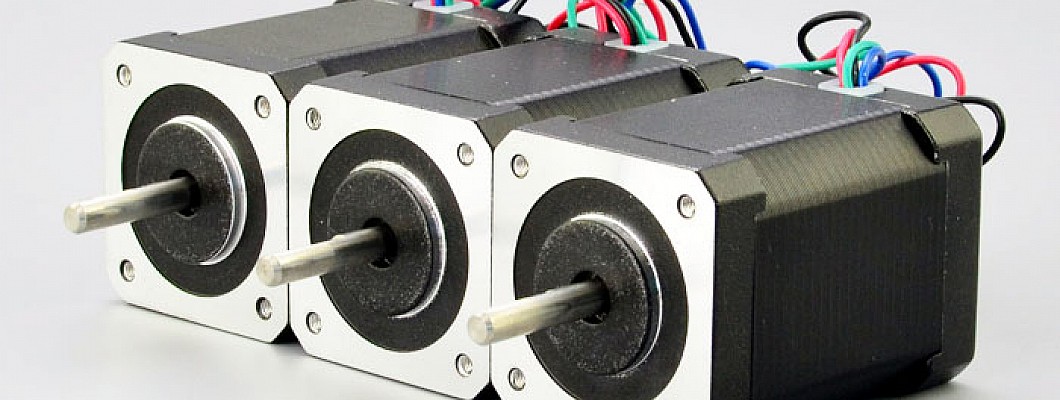
Open loop and closed loop are terms that are often used in control. Open-loop stepper motors and closed-loop stepper motors are also distinguished and named according to their control systems. Therefore, to understand the difference between them, you must first understand the difference between open-loop control and closed-loop control. Their differences are as follows:
1. Different working principles Open-loop control systems cannot detect errors, nor can they correct errors. The control accuracy and interference suppression performance are relatively poor, and it is very sensitive to changes in system parameters. Therefore, it is generally only used in some occasions where the external influence can not be considered, or the inertia is small, or the accuracy is not high. The advantage of closed-loop control is that it fully utilizes the important role of feedback, eliminates unpredictable or uncertain factors, and makes corrective actions more accurate and powerful. But it lacks the preventiveness of open-loop control. Corrective measures are taken only if adverse consequences are caused during the control process. Therefore, it is generally widely used in occasions with relatively high requirements on the external environment and high precision. 2. The structure is different The open-loop system has no testing equipment and is simple in composition, but the selected components must strictly guarantee the quality requirements. The closed-loop system has the ability to suppress interference, is insensitive to changes in component characteristics, and can improve the response characteristics of the system. 3. Different stability The stability of the open-loop control system is relatively easy to solve. The introduction of feedback loops in closed-loop systems increases the complexity of the system.How to judge open-loop and closed-loop systems?
The judgment of the open-loop and closed-loop systems is whether there is feedback or not, and whether it plays a role in the current control. Open-loop control is generally a control activity that is completed in an instant, and closed-loop control must last for a certain period of time, which can be used to judge the feedback link.
Open-loop control refers to the control process in which there is only forward action between the control device and the controlled object without reverse connection. Therefore, the output of the open-loop control system does not affect the control function of the system. Such as automatic vending machines, automatic washing machines, automatic product production lines, automatic lathes, etc., are generally open-loop control systems. Closed-loop control system: Closed-loop control is a control method that corrects according to the output feedback of the control object. When the actual measurement deviates from the plan, it is corrected according to the quota or standard. Closed-loop control, the control signal is taken out from the change of the output quantity as a comparative quantity and fed back to the input terminal to control the input quantity. Generally, the phase of the taken out quantity and the input quantity is opposite, so it is called negative feedback control. From the above information, we can draw a conclusion: the fundamental difference between an open-loop stepper motor and a closed-loop stepper motor is whether the motor will feedback the current running state. The open-loop stepper motor has no feedback signal, and only performs actions in sequence, without detecting the output result and not correcting the output. On the contrary, the closed-loop stepper motor has a feedback signal, which takes corresponding action measures or signal feedback to the PLC according to the stepper motor driver, and the PLC determines the next step of program processing. That is to say, the closed-loop stepper motor detects the output result and corrects it according to the difference between the output result and the theoretical requirement. Therefore, the accuracy of the closed loop is higher than that of the open loop.Other differences between open-loop stepper motors and closed-loop stepper motors
1. The encoder is added to the closed-loop stepping motor, and the closed-loop driver and the closed-loop stepping motor need to be used as a set;
2. Fast response: Closed-loop stepper motors have very good instantaneous synchronization, so closed-loop stepper motors are more advantageous for short-distance accurate and fast positioning applications. 3. The closed-loop stepper motor can adjust the winding current according to the load, thereby reducing the temperature rise of the motor and improving the efficiency of the system; 4. The closed-loop stepper motor can provide a certain overload current in a short time to help overcome the instantaneous load stagnation; 5. When selecting the load torque of the closed-loop stepping motor, a small or even no margin can be considered, while an open-loop stepping motor generally needs to reserve 30% of the torque margin to prevent stalling; 6. The acceleration of the open-loop stepping motor is too fast, and the load is stuck instantaneously, which may cause the load to exceed the torque of the motor at the current speed and cause stalling. The closed-loop stepping motor can reduce the requirements for the acceleration and deceleration curve of the upper control to prevent out-of-step stalling ;




















































